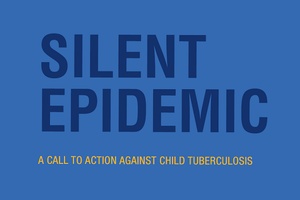New report exposes silent epidemic of child TB
The Union releases a report, Silent Epidemic: A Call to Action Against Child Tuberculosis, calling for urgent action to protect children from TB.
Empowering local health workers can save up to 250,000 lives each year.
GENEVA, 23 May 2018 – The International Union Against
Tuberculosis and Lung Disease (The Union) published a new report
today, “Silent Epidemic: A Call to Action Against Child
Tuberculosis”, calling for urgent action to protect
children from tuberculosis (TB). Worldwide, one million children
under the age of 15 develop TB and 239,000—nearly one in
four—die annually. Yet most of these deaths are treatable
and preventable with simple, cost-effective public health
measures.
This massive toll of deaths among
children results from systematic disregard for children’s
rights to health. Within global public health, it is an open
secret that health systems neglect children with TB because
children are less contagious than adults—stopping the
spread of TB is a priority—and because the standard tools
used to diagnose TB work less well in children.
“Children
with TB rarely die when they receive standard treatment for the
disease, but 90 percent of children sick with TB worldwide are
left untreated,” said Dr. Paula I. Fujiwara, Scientific
Director, The Union. “This neglect can no longer be
excused on grounds of economy or expediency. TB is preventable,
treatable, curable. The continuing medical neglect of child TB,
resulting in millions of avoidable deaths, constitutes a human
rights violation by any reasonable measure.”
Ending
the child TB epidemic requires local interventions, sensitive to
social and cultural context, to reach at-risk children using
simple tools for active screening and diagnosis. Even in
resource-limited areas, projects like DETECT Child TB,
spearheaded by The Union, are demonstrating that medical
professionals can be equipped with the knowledge and tools to
diagnose and treat TB in children, with access to care provided
at the community level.
“By following a
simple process to screen, diagnose and treat children in
households with adults suffering from TB, we have been able to
make a tremendous impact in a short space of time,” said
John Paul Dongo, Director of The Union’s Uganda office.
“In Uganda, where this intervention was implemented,
diagnosis of Child TB cases more than doubled, with the
proportion of child TB cases increasing from 7.4 percent at
baseline to 17 percent, we have also achieved 82 percent success
in treating children diagnosed with TB, up from 65 percent.
Screening households where an adult is diagnosed with TB to see
if children have been exposed in the home must become the
standard implemented everywhere. Where The Union has piloted
this approach in Uganda, 72 percent of at-risk children were
able to receive preventive TB treatment, up from less than 5
percent previously.”
In the long run,
greater investment in research and development needs to deliver
better diagnostics, treatments and an effective vaccine that
prevents TB. To be a success, the UN High Level Meeting on TB in
September 2018 needs to generate concrete action, where
governments are held accountable for achieving time-bound
targets, for investing in new research and delivering the care
to which all children with TB have a fundamental right.
“The
public health sector cannot end the TB epidemic alone, because
TB is driven by economic and demographic factors as much as
it’s driven by health factors,” said José
Luis Castro, Executive Director of The Union. “We are
dealing with an airborne disease that is becoming increasingly
resistant to the few antibiotics we have to treat it, and
children are bearing some of the worst impacts. We simply cannot
continue like this. Heads of State are the only leaders with the
power and influence to mobilise resources to end the epidemic.
They must act.”
Download The Union's report into child TB here:
childTB.theunion.org
About The International Union Against Tuberculosis and Lung Disease (The Union)
The Union is a global scientific organisation with the mission to improve health among people living in poverty. We do that by conducting scientific research, working with governments and other agencies to translate research into better health for people around the world, and delivering projects directly in the field. The Union is made up of a membership body of people around the world who help to advance our mission, and a scientific institute that implements public health projects within countries. For close to 100 years, we have been leaders in the fight against some of the world’s biggest killers, including tuberculosis, lung diseases and tobacco use.
Source:
The Union


